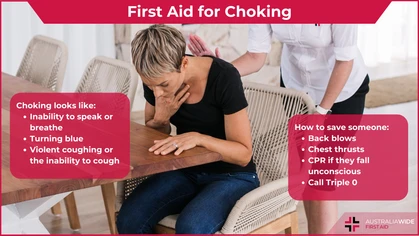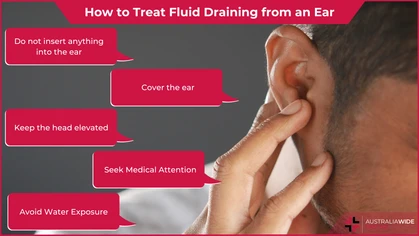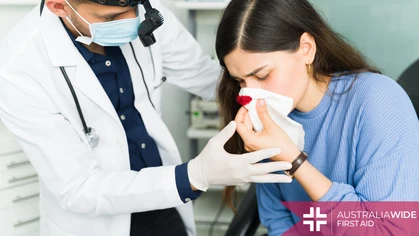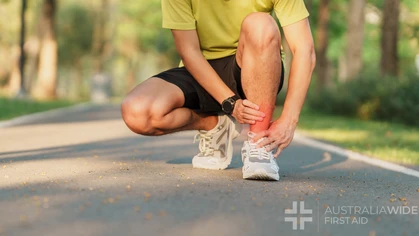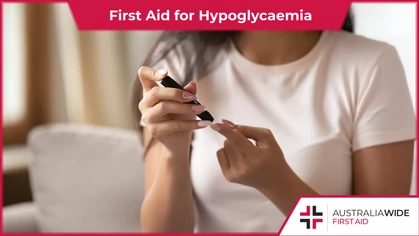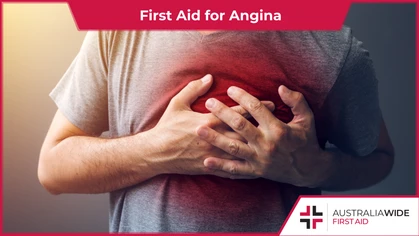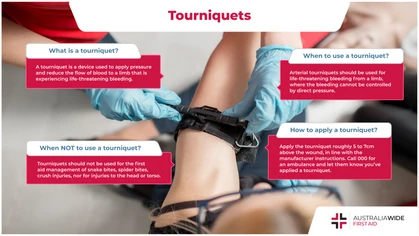AED First Aid

How-To
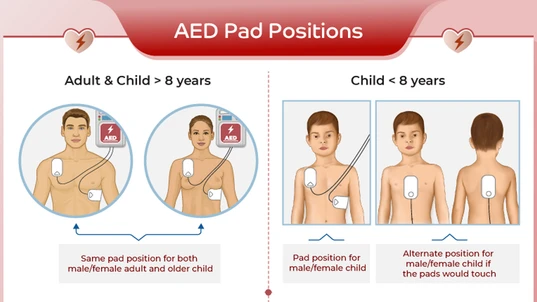
Timely use of an AED improves the chances of surviving sudden cardiac arrest by an astounding 600% over the odds of surviving without this intervention.
When a heart stops beating, emergency action using an AED — Automated External Defibrillator — saves lives. Timely use of an AED improves the chances of surviving sudden cardiac arrest by an astounding 600% over the odds of surviving without this intervention. Not to be confused with heart attack, sudden cardiac arrest is far more lethal. It is the leading cause of death in Australia. Read more about the difference between Cardiac Arrest and Heart Attack.Timing is everything
Every year in Australia, more than 33,000 people experience sudden cardiac arrest. Without intervention within 8 minutes of cardiac arrest, their chances of survival are slim. Statistics show that, outside of the hospital, fewer than 9 per cent will survive. The probability of survival drops 7–10 per cent for every minute a person suffers a life-threatening arrhythmia — a condition in which the heart beats with an irregular or abnormal rhythm. The victim can be brain-dead within 4 to 6 minutes and die in as little as 10 minutes. Defibrillation delivers electrical shocks to convert ventricular arrhythmia to normal rhythms. AED is one type of defibrillator. This portable first aid device has proved to be a game-changer in the hands of first responders. Other defibrillator types include implantable cardioverter defibrillators (ICDs, surgically implanted in the body), and wearable cardioverter defibrillators (WCDs, that rest on the body). These are designed to prevent sudden death among people with high risks of life-threatening arrhythmia.What does AED stand for?
AED stands for Automated External Defibrillator. Being automated, it will do all the heavy lifting for you. It is user-friendly and untrained people will have no trouble using an AED in an emergency.What is a defibrillator? What does it do?
A defibrillator works by sending an electric pulse, or shock, to the heart with the aim of restoring its beating when it has stopped. By the same method, defibrillators can also prevent or correct an arrhythmia (an uneven heartbeat or one that is too slow or too fast). An Automated External Defibrillator (AED) is a portable, compact, lightweight machine that can ‘jump start’ the heart to get it beating again. It will automatically analyse the heart rhythm in a cardiac arrest victim. When appropriate, it will deliver an electrical shock to the heart to restore muscle contractions and return its normal rhythms. An AED system includes the AED unit plus its accessories — pad electrodes, a battery and, if applicable, an adapter. Most modern AEDs provide verbal instruction to users. Emergency first-responders are typically equipped with, and trained to use, AEDs. As a direct consequence of their effectiveness, the availability of AEDs has become more widespread. You’ll now find AEDs not just in hospitals, clinics, and ambulances, but also in many public places, including offices, schools, shopping malls, libraries, and airports.When to use a defibrillator
Intervention includes calling for an ambulance at the outset, followed by emergency first aid — CPR (cardiopulmonary resuscitation) and application of an AED. Using a defibrillator is an emergency response for the victim of sudden cardiac arrest. Sudden cardiac arrest is a consequence of the heart’s electrical system malfunctioning. The affected heart muscle is unable to pump blood and the body’s vital organs are then deprived of oxygen-enriched blood. Sudden cardiac arrest often occurs without warning. Observable signs are immediate and drastic.Symptoms of Sudden Cardiac Arrest include:
- Sudden collapse
- Loss of consciousness
- No breathing
- No pulse
How an AED works
Many AEDs turn on automatically when they are opened. Once it powers up, the unit’s voice prompts or written instructions will guide you. Your actions would include attaching 2 electrodes (sticky pads with sensors) on the chest of the person in cardiac arrest. These electrodes are sensors for the AED’s processor. It will use the information to analyse the heart’s rhythm and determine whether an electric shock is needed. If a shock is needed, the AED will prompt you to press a button to deliver the defibrillation shock. Some AEDs give forewarning of the shock, via voice prompt, before delivering the shock without your intervention. The AED will then instruct the user to begin CPR immediately. Two minutes later, the AED will perform another analysis to see if another defibrillation shock is needed. The cycle repeats.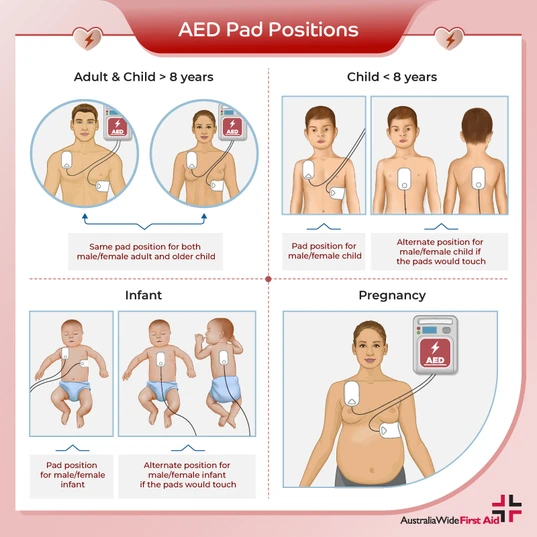
AED Pad Positions
How to Use an AED
- Clean contact needs to be made between the AED’s electrodes and the victim’s dry skin. The gel on the underside of the electrodes is an effective conductor. To clear the way for the defibrillation shock, unbutton or pull back their clothing (be considerate here). Wipe any sweat or moisture from the skin.
- Power up the AED. In the meantime, apply CPR.
- Picture a clock face, its hands at 10:20 — high on the left, low on the right. This will give you the right idea as to where the electrodes should be placed on the chest.
- You need at least 8 kg, up to 11 kg, of pressure on the electrodes as you place them. The AED will guide you in approximating this.
AED myth busters
1. Myth: Special training is needed to use an AED
False. Contrary to what some believe, you don’t need to be a medical professional to use an AED successfully. The AED will guide you — usually with audio prompts, otherwise written instructions. Simply follow the directions it provides. You should waste no time if an emergency calls for an AED. There may be one in a nearby first aid kit. Use it. Experienced or inexperienced, you have a very good chance with the AED, of being able to help someone survive sudden cardiac arrest. Regardless, call Emergency help without delay. The operator will be able to instruct you.2. Myth: AEDs can accidentally kill people
False. This will not be possible with an AED. An AED typically delivers a charge of 3,000 volts in less than 0.001 of a second — enough power to light a 100-watt bulb for 23 seconds. Despite having substantial power, AEDs are engineered to properly respond to sudden cardiac arrest. It will deliver a controlled electric shock to restart the heart only as needed. The AED will shock neither you or the victim out of turn. If you were to apply a defibrillator to a person whose heart is healthy and not in need of a shock, it would not deliver a shock. You can dismiss thoughts of gambling with someone else’s life or causing their condition to spiral beyond salvation. In fact, using the machine will only improve the odds of survival in favour of the cardiac arrest victim. Good Samaritan laws apply in Australia (and they do in many other countries). If your first aid attempts fail and the person dies or has adverse effects, you would not be held legally liable. Exceptions apply if a responder’s actions are proven to be reckless.3. Myth: AEDs can be used only once
False. Today’s AED machines are built to last and have the capacity to deliver between 10 and 100 shocks during their service life. In addition to a computer processor to detect heart abnormalities and determine when a shock should be applied, an AED will include a battery and sensors (electrodes). To keep the AED in good working condition and ready for use, owners need to maintain the sensor pads and battery system in line with the AED manufacturer’s instructions.4. Myth: Defibrillator shock causes the patient to flail around violently
False. In countless medical dramas, soap operas and blockbusters, cardiac arrest is portrayed unrealistically. The reality clearly does not play as well onscreen. Instead, we hear “Clear!” (a good thing) and see shock pads being applied. The cardiac arrest victim then jerks violently, limbs flailing, body arcing up like a rag doll. The impression left by such animations is unlikely to encourage observers to take action in a real life emergency. In reality, when the shock from an AED is applied, the recipient’s shoulders might move just a little.In Conclusion
Nothing should stand in your way if the situation calls for you to use an AED. You will be swinging the pendulum hard in favour of the cardiac arrest victim’s survival. Confident decisions and quick action in life or death scenarios really do make a difference. Disclaimer: This article is for informational purposes only. It does not constitute, replace, or qualify as any form of first aid training.
Originally published at
https://www.australiawidefirstaid.com.au/resources/aed-first-aid
as part of the Australia Wide First Aid Articles Library
